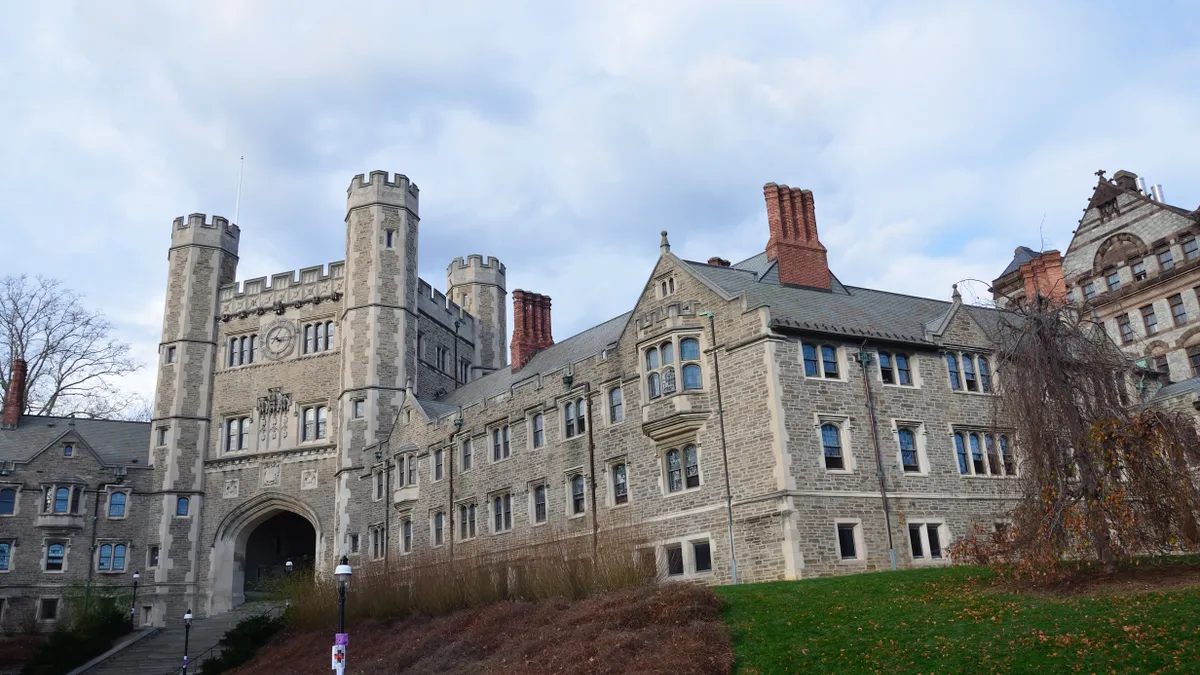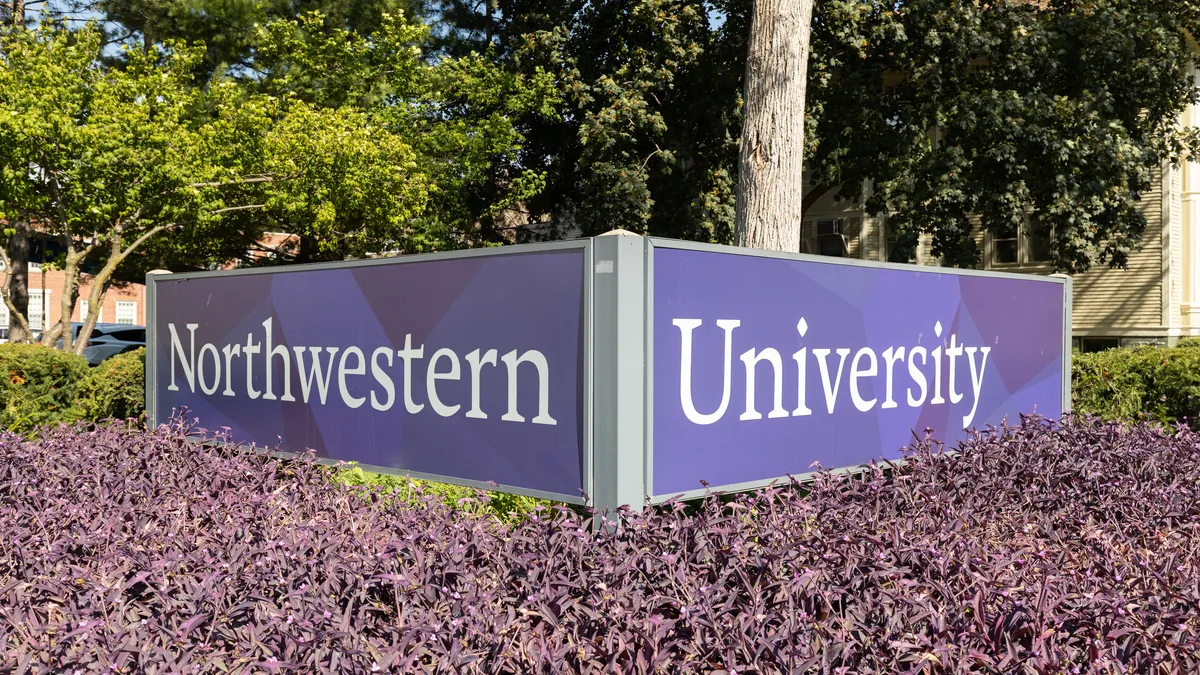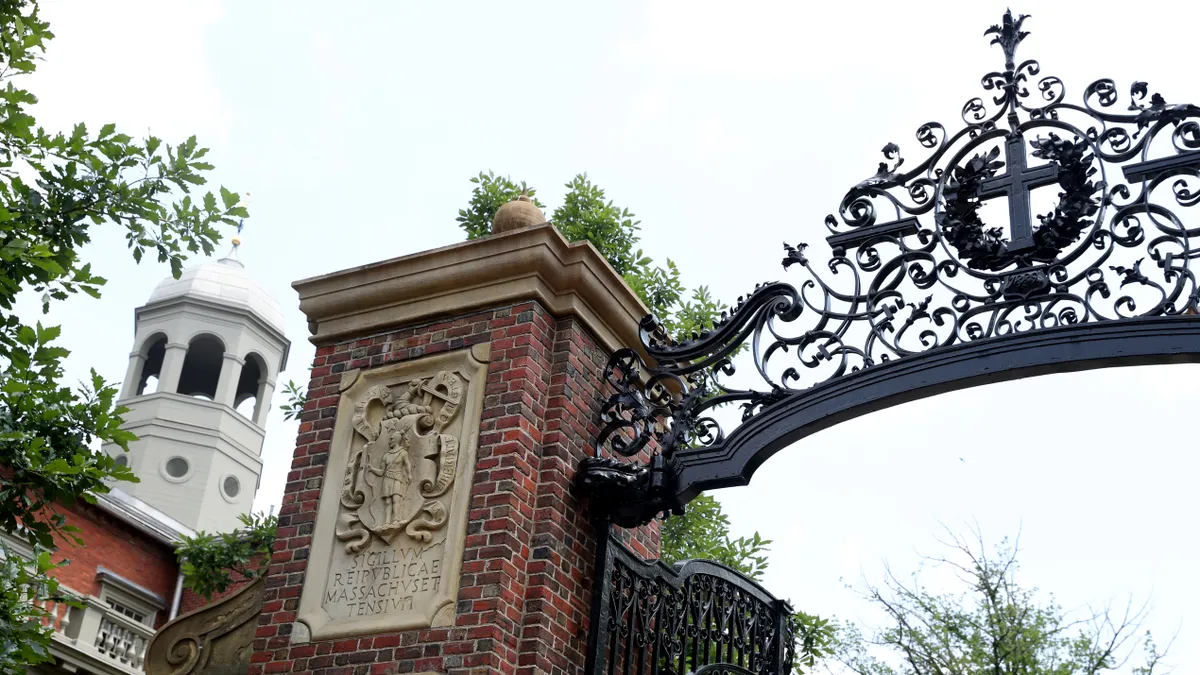The governing board for Pennsylvania's State System of Higher Education voted Wednesday to advance a contentious merger plan meant to correct its flagging enrollment and unsteady finances.
The proposal would consolidate six of its 14 universities into two new entities with unique missions that the system believes will attract adult students and those without a degree, PASSHE Chancellor Dan Greenstein said during a two-hour virtual meeting Wednesday.
Bloomsburg, Lock Haven and Mansfield universities in the northeast would specialize in stackable credentials and in-demand fields in the state, while California, Clarion and Edinboro in the west would focus on online education.
PASSHE is banking on the changes in part to help boost its enrollment, which has tumbled about 20% in the last decade to nearly 96,000 students today. The enrollment woes, taken with middling state investments and a saturated higher education market in the Keystone State, led Greenstein to push what he calls a "transformative" vision over the last 10 months. Disrupting the status quo was part of his charge when he took over as system head in 2018, he said during the meeting.
But Greenstein has had difficulty selling what the system has faithfully referred to as "integrations." This stems in part from fears that consolidation would necessitate deep faculty and staff cuts, and otherwise gut institutions that are economically integral to their communities.
Yet in Greenstein's view, the system has exhausted its options.
"We cannot continue doing the same things expecting different results," he said during the meeting. "That was the instruction that was made to me."
The board vote takes the plan, outlined in a 439-page document released earlier this week, to a 60-day public comment period. If the system stays the course, its governors will fully approve the mergers in July, with the goal of having them take effect in fall 2022.
What's in an integration?
The two new entities would each have their own academic programs, president, leadership team, faculty and enrollment strategy.
These consolidations would attempt to reduce students' cost of attendance by 25%. This wouldn't necessarily be achieved through lower tuition, the system says, but rather effects of the mergers, such as expansions to programming that would shorten the timeline for earning a degree.
PASSHE leaders stressed during Wednesday's meeting that they have yet to fully iron out the proposal's finer points. The system is still working with its accreditor, the Middle States Commission on Higher Education, to ensure the two entities would comply with its standards. One university in each trio slated for consolidation would be designated the "main" campus for accreditation purposes, though the plan emphasizes the others would "operate as full and co-equal campuses in all other respects."
Early discussions indicated officials wanted to preserve the universities' identities, though this has shifted. The plan calls for the campuses to be put under a single umbrella with a "market-tested" name, though the "brand" of each university would remain.
"(W)e expect to incorporate the current location name for each partner institution and continue to leverage it in traditional ways," such as in recruitment and marketing, the document states.
Officials also want to preserve sports on each of the six campuses but are still answering questions from the NCAA.
The plan also lacks precise data about how faculty will be affected, stating instead that instructor numbers will be determined by enrollment, which the system expects will grow 1% year over year at the northeast institution, and 2% at the western one.
Greenstein said during the meeting that the system has worked with its faculty union, the Association of Pennsylvania State College and University Faculties, to minimize upcoming faculty reductions. After those cuts, the consolidations' effects on jobs would likely be "negligible."
A new academic analysis presents a dire picture concerning future layoffs.
The University of Massachusetts Amherst's Political Economy Research Institute and the Pennsylvania Budget and Policy Center forecasted a 26% cut in full-time equivalent employees across California, Clarion and Edinboro and 20% from Bloomsburg, Lock Haven and Mansfield combined, by 2023, compared to 2019 employment numbers. Much of the downsizing would happen among faculty.
Systemwide, there would be a 14% decrease in the number of full-time equivalent employees during the period, the groups predicted.
PASSHE spokesperson David Pidgeon did not address the veracity of the figures in an emailed statement, but instead signaled the system's confidence that the mergers would allow the surrounding communities to "continue to benefit from a positive economic impact."
If approved, the consolidations would "mean these institutions can better serve students, can continue their historic missions, and can better support regions where they've operated as economic drivers for more than a century—doing more together than any one institution can do alone," Pidgeon said.
A beleaguered system
Though board members questioned some of the plan's specifics during the virtual meeting, many of them said any flaws should not obstruct its aim. The board is "not in a position where we can let the perfect get in the way of the good," said board member David Maser.
Indeed, the system's position has worsened to the point of crisis.
State funding plummeted by more than 30% since 2001, after adjusting for inflation, the system said. Big cuts a decade ago forced the system to hike tuition, making its programs unaffordable to many of the students it was meant to serve.
The more financially sound institutions for years have been subsidizing those with poor finances, a dynamic that cannot persist, officials said during the meeting. Mansfield's academics and auxiliary services operate at a net loss, for instance, and it carries a negative reserve balance and relies on annual loans from the system to meet expenditures. It and Lock Haven are the second and third most-subsidized universities in the system.
And many others in shaky financial shape.
PASSHE wants each university to have a three-year rolling average operating margin of at least 2% to 4%, based on guidelines from the National Association of College and University Business Officers, according to system documents. But in the previous academic year, 11 out of 14 universities had operating margins below 2%. That's up from five institutions in 2015-16.
The mergers will not erase the system's financial problems, however. The six universities that are to be combined have nearly half a billion dollars in debt, the merger plan shows: $215 million among the northeastern institutions, and $246 million among the western ones, in both cases mostly relating to underused dorm space.
"Alleviating the financial pressures associated with the debt load requires an ongoing partnership with the Commonwealth," which could include buildings being acquired or helping with debt service payments, the plan states.
Reactions
The faculty union has continually expressed skepticism about the plan, and in a virtual press conference Wednesday shredded it again.
APSCUF President Jamie Martin said that despite the proposal's length, it lacks key details. And it raises questions like whether students will be forced to enroll in online classes to complete their degrees, creating concerns about equity and access, she said.
The union does not know how many faculty would be laid off under the plan, she said. Other faculty members on the virtual call said they thought system officials have dismissed their questions.
Kyle Schlecht, a junior at Lock Haven, said when he and his peers reached out to administrators at his school with questions about the mergers, they have been met with "propaganda."
"We stand alongside the faculty," he said. "And we'll fight this to the end."






















